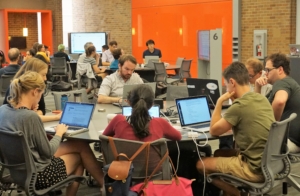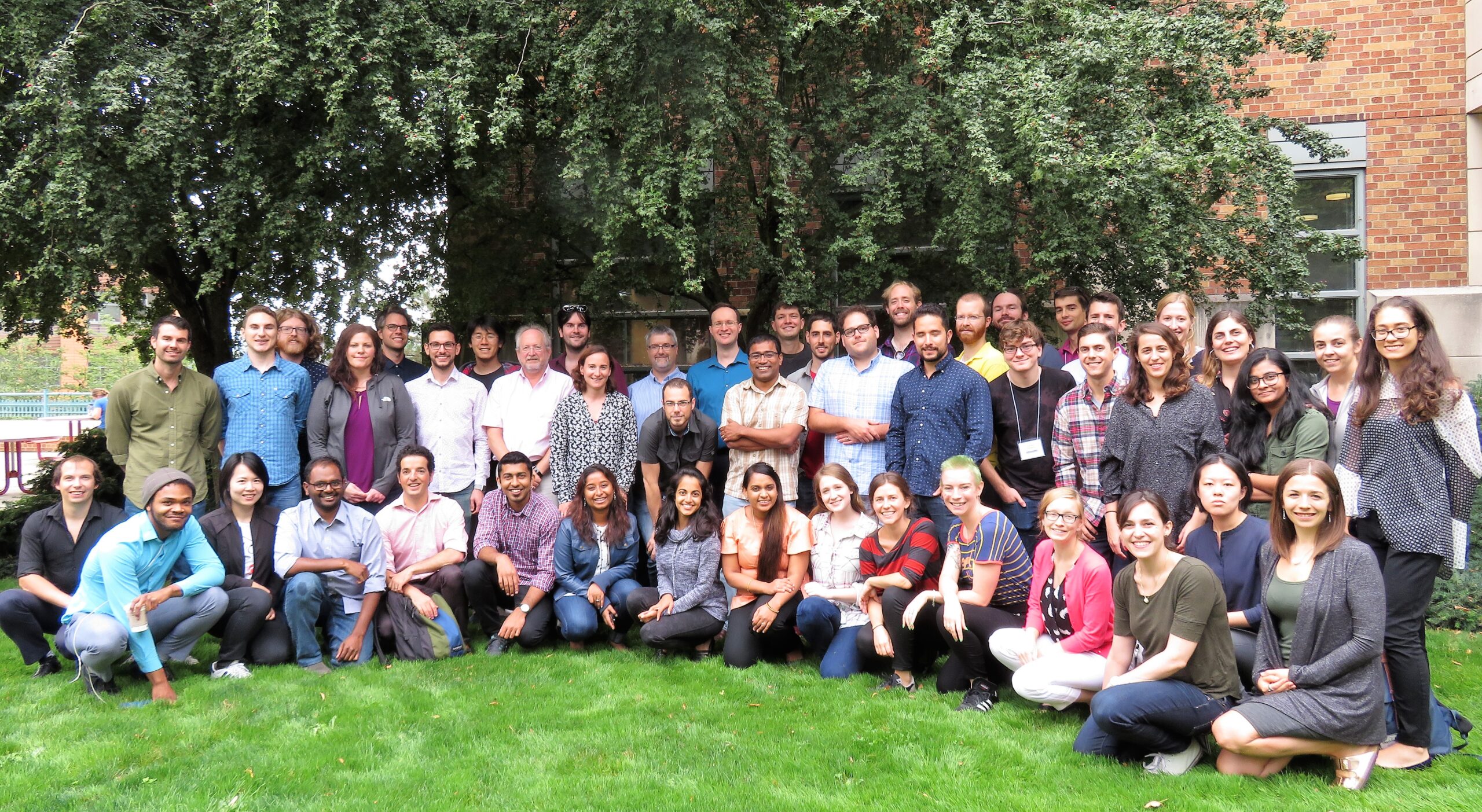By Ariel Rokem, data scientist and Neurohackweek organizer

Forty graduate students, postdocs, research staff and faculty took part in Neurohackweek 2017, including international attendees from Turkey, Russia, Canada, the United Kingdom and Denmark.
The neuroscience conference, which ran Sept. 4 – 8, kicked off with a talk by Russ Poldrack (Stanford University) posing the problems of reproducibility in human neuroimaging and offering some proposed solutions. After this, participants could select from among a series of short data science tutorials on tools that would be used in hacks during the week, ranging from version control and programming (in R and in Python) to data visualization in Javascript, using D3.
In the following days, morning tutorials were offered about cloud computing (Tara Madhyastha, University of Washington (UW)), machine learning (Jake Vanderplas, eScience Institute) and Chris Holdgraf (University of California, Berkeley) and a hands-on tutorial about tools for reproducible neuroscience data analysis (Satra Ghosh (video part 2), Massachusetts Institute of Technology and Chris Gorgolewski, Stanford University).
Afternoons and evenings were devoted to work on hack projects and additional breakout sessions were presented on advanced topics in statistics and signal processing (given by Nicolas Cain, Allen Institute for Brain Science, Jeanette Mumford, University of Wisconsin, Jean-Baptiste Poline, Montreal Neurological Institute and McGill University, and Bing Brunton, UW).
Project work encouraged participants to collaborate in analyzing data together or creating new software tools. A few examples:
1. A data-driven approach to creating an ontology of cognitive psychology terms (for example, what terms are used in the scientific literature in conjunction to “memory”, or in conjunction to “pain”?).
2. A new software library that detects “avalanches” in fMRI data. These are cascades of bursts of activity in the brain that have a coherent spatial and temporal structure.
3. An analysis of publicly available data from the Human Connectome Project using new machine learning tools to explain inter-individual differences in cognitive abilities.
4. Experimental software to use Amazon Web Services (AWS) to deploy large-scale analysis of MRI data using the AWS Lambda service.
A full list of the projects, with links to code and results are at: https://github.com/

The week ended on Friday with presentations of the projects by all the teams, and an evening farewell party (a cruise and dinner on Lake Washington) which provided an opportunity for participants to relax and enjoy each other’s company before heading back to their respective corners of the globe. Several of these projects continued to develop after the end of the week, with the hope of sustaining the long-term collaborations that started as part of Neurohackweek.
This year’s Neurohackweek benefited tremendously from support by AWS and Alces Flight in creating new tutorial materials to learn about cluster computing – work led by Tara Madhyastha from the UW and the Integrated Brain Imaging Center. In addition, with crucial help from Yuvi Panda and Chris Holdgraf from the Jupyterhub team at UC Berkeley, and the eScience Institute’s Cloud Computing team (particularly Amanda Tan and Rob Fatland), we were able to create a cloud-based system that provided participants with access to tutorial materials, data and computing through their web browsers.
This deployment of Jupyterhub was relatively complex, because we wanted to provide participants with a wealth of software and data options that they could use through this system. This experiment was a resounding success, with participants providing very enthusiastic feedback about the experience of using the system. With the lessons that we have learned from this deployment, we expect that we will be deploying more systems of this sort for future courses (see also the Jupyterhub documentation on the topic: https://zero-to-jupyterhub.

